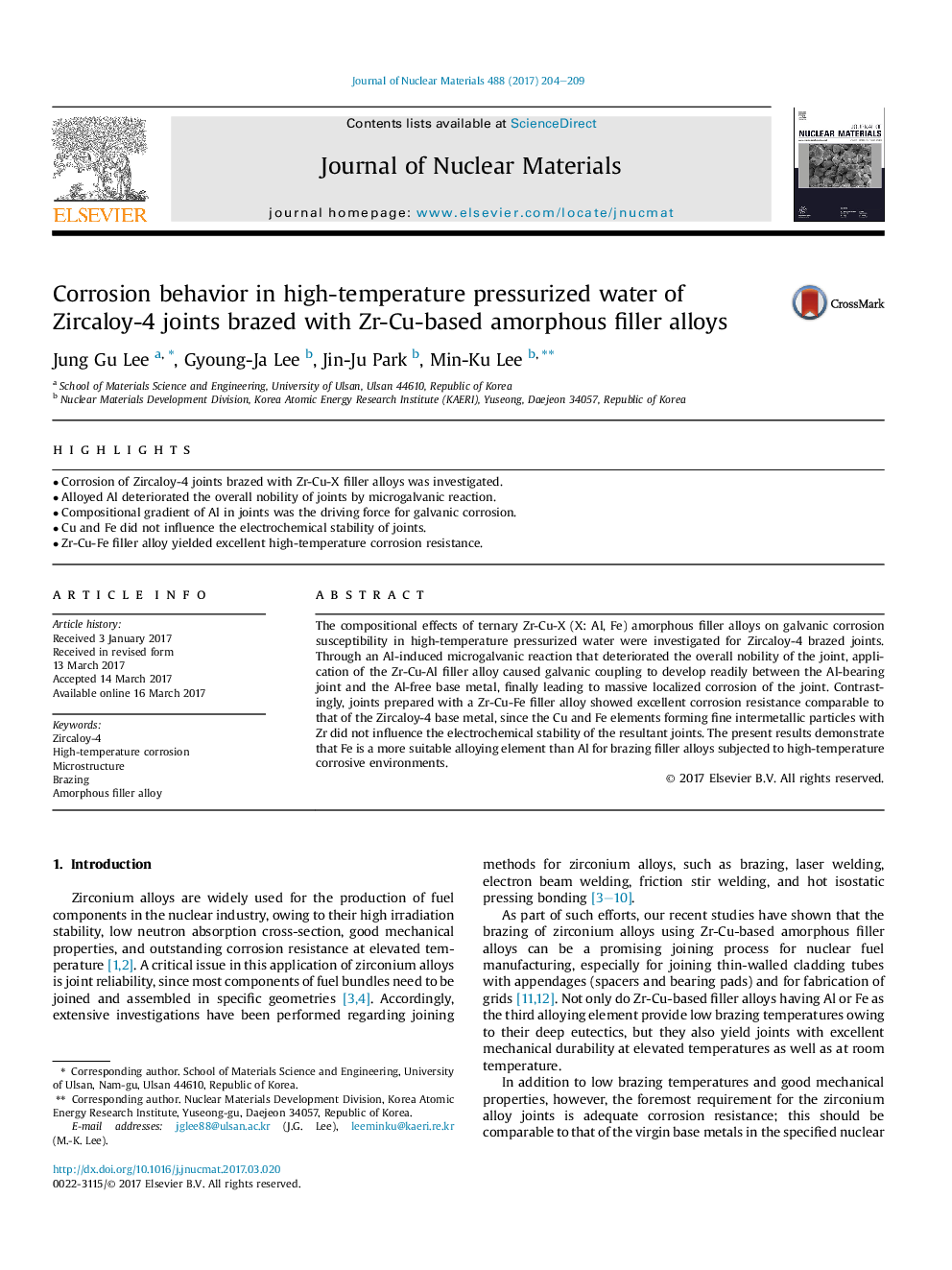| Article ID | Journal | Published Year | Pages | File Type |
|---|---|---|---|---|
| 5454185 | Journal of Nuclear Materials | 2017 | 6 Pages |
Abstract
The compositional effects of ternary Zr-Cu-X (X: Al, Fe) amorphous filler alloys on galvanic corrosion susceptibility in high-temperature pressurized water were investigated for Zircaloy-4 brazed joints. Through an Al-induced microgalvanic reaction that deteriorated the overall nobility of the joint, application of the Zr-Cu-Al filler alloy caused galvanic coupling to develop readily between the Al-bearing joint and the Al-free base metal, finally leading to massive localized corrosion of the joint. Contrastingly, joints prepared with a Zr-Cu-Fe filler alloy showed excellent corrosion resistance comparable to that of the Zircaloy-4 base metal, since the Cu and Fe elements forming fine intermetallic particles with Zr did not influence the electrochemical stability of the resultant joints. The present results demonstrate that Fe is a more suitable alloying element than Al for brazing filler alloys subjected to high-temperature corrosive environments.
Related Topics
Physical Sciences and Engineering
Energy
Nuclear Energy and Engineering
Authors
Jung Gu Lee, Gyoung-Ja Lee, Jin-Ju Park, Min-Ku Lee,
